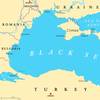More Slow Boats to China Following P3 Flop: Analysis
With Maersk, MSC and CMA CGM now in damage limitation mode following their failure to get P3 agreed in China, what else can they do to cut costs? Drewry Maritime Research considers the question in their latest 'Container Insight Weekly' – excerpts as follows:
Following China’s rejection of P3 last month, Maersk, MSC and CMA CGM are under pressure to find alternative ways to cut costs. In Drewry’s view, one of these must be by reducing fuel consumption through increased slow steaming, as bunker costs account for well over half of all vessel running costs. It is not the only way, as clarified in ‘Life without P3’.
Cash strapped competitors could easily follow suit on slow steaming as the carrier industry is still struggling with over-capacity, and shareholders are clamouring for remedial action. Without change, there will continue to be too many vessels chasing insufficient cargo, thereby putting yet more pressure on freight rates and profitability.
One of P3’s biggest savings was intended to come from carrying more-or-less the same amount of cargo between Asia and Northern Europe with only eight sailings a week instead of nine. And to the Mediterranean, five loops were planned instead of six. The implication is that 11 of the carriers’ small 9,000 teu vessels would have been cascaded out of the former, and another 11 vessels of around 8,000 teu out of the latter.
It will be a hard act to follow, as many of the displaced vessels could have been transferred to other trade routes where further economies of scale are possible, such as the Transpacific. Quantifying the amount saved through the entire P3 project is difficult, therefore, but the benefits of further slow steaming between Asia and Europe could make up a significant proportion of the sum involved.
By lengthening the round voyage time of each existing weekly service between Asia and Europe by seven days through the addition of one vessel, Maersk, MSC and CMA CGM could effectively ‘lose’ 15 surplus vessels whilst awaiting the cargo growth for which they were ordered to belatedly appear.
Had P3 been allowed, the elimination of a 9,000 teu vessel a week between Asia and Northern Europe would have saved its members approximately $155 million annually in bunker costs alone, according to Drewry’s calculations, and port costs, diesel costs and vessel costs would have been on top of this.
On the other hand, by lengthening the westbound and eastbound transit times of the three carriers’ existing nine weekly loops between Asia and Northern Europe by three and four days respectively (through the addition of one vessel), the annual bunker cost saving would amount to around $264 million, according to Drewry’s calculations. This is based on the price of fuel being $610/tonne, whereas it has recently jumped to $640/tonne, and would entail westbound vessels being operated at 16 knots instead of 18 knots, and eastbound vessels being run at 12 knots instead of 14 knots.
In the Mediterranean, the elimination of one 8,000 teu vessel a week would have saved its members another $94 million annually in bunker costs alone, whereas, by also lengthening the westbound and eastbound transit times of the three carriers’ six existing weekly loops by three and four days respectively, the annual bunker cost saving would amount to around $132 million. The speed adjustments would be more-or-less the same as for Northern Europe.
However, whereas the financial benefit of the service eliminations between Asia and Europe originally envisaged by P3 would have all gone to its members, some of the savings resulting from increased slow steaming would have to be passed back to shippers via reduced bunker surcharges. Ignoring the split, and assuming an average vessel utilisation of 85% from Asia to Europe, and 65% on the way back, the three carriers and their customers together would save approximately $45/teu on every teu shipped during the speed reduction programme.
It must be emphasised that these are very approximate calculations based on one service pattern in each trade lane, whereas there is little uniformity in either port rotations or vessel speeds. Not all service speeds have to be further reduced either. Some service speeds could be maintained, creating dual speed alternatives.
Also, the key to making the savings is having enough surplus vessels in the right place at the right time, which may not be possible. MSC only shares vessels with CMA CGM between Asia and Northern Europe, and Maersk only shares vessels with CMA CGM in the Mediterranean, so there is no overall co-ordinating centre to simplify planning in this respect, which would be illegal.
Moreover, slow steaming is not a win-win situation for carriers and shippers. Drewry has spoken to many shippers who claim that carriers’ slow steaming cost reductions ultimately cost them more money through the need to maintain higher inventory costs, so the initiative will be resisted.
Drewry's View
Further slow steaming between Asia and Europe appears a strong possibility as Maersk, MSC and CMA CGM must find new ways of reducing costs following China’s rejection of P3.
Source: Drewry Maritime Research











